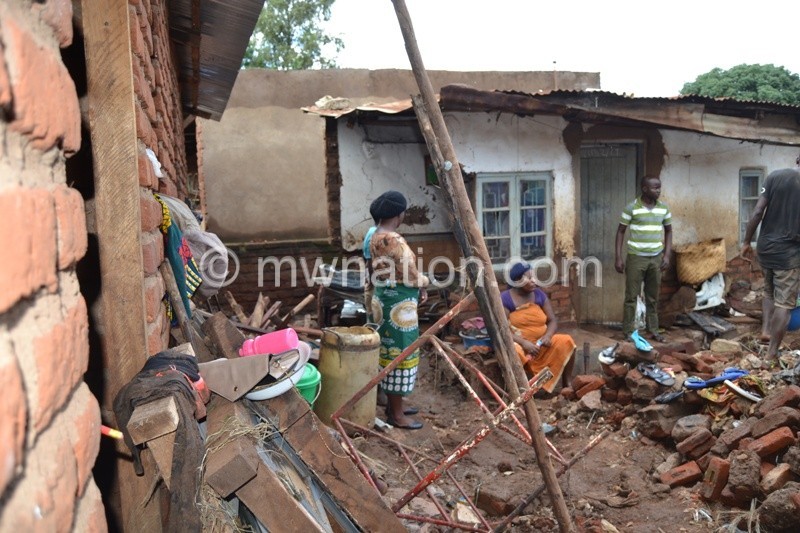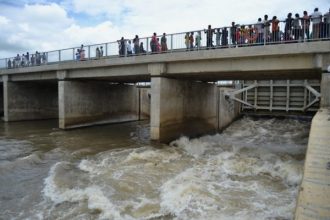Disaster losses affecting Africa’s economic growth—report
A United Nation Office for Disaster Risk Reduction (Unisdr) report has pegged the global disaster economic losses at $2.9 billion which is a 151 percent increase in 20 years between 1998 and 2018).
The report released on Friday, shows that such huge economic losses are impacting heavily on economic growth of developing countries such as Malawi.

Malawi between 2015 and 2018 experienced twin disasters of floods and drought in which 186 people died while food shortages cost the government over $600 million (K277 billion) every year.
The report shows that globally between1978-1997 economic losses in disaster-hit countries were estimated at $1.3 trillion, of which climate-related disasters accounted for $895 billion or 68 percent.
The report also suggests that 77 percent or $2.2 trillion of the losses experienced in the past two years are due to climate-related disasters such as floods and Tsunamis which also continues to kill many people.
The release of the report coincides with the international Day for Disaster Reduction which falls on October 13 every year and the Africa- Arab Platform on Disaster Risk Reduction taking place in Tunisia.

Major losers according to the report are recorded in the US; $944.8 billion; China, $492.2 billion; Japan, $376.3 billion and India, $ 79.5 billion.
However, when economic costs are expressed as an average percentage of gross domestic product (GDP) low-income countries appear to be the worst hit with Haiti being the worst at 17 percent.
The report says inequalities are even greater than available losses because of systematic under-reporting by low-income countries.
“While high-income countries reported losses from 53 percent of disasters between 1998 and 2017, low-income countries only reported them from 13 percent of disasters. No losses data are therefore available for nearly 87 percent of disasters in low-income countries,” reads the report in part.
In this reporting period, 1.3 million people lost their lives and 4.4 billion people were injured, rendered homeless, displaced or in need of emergency assistance.
Out of the 7 255 disasters, 43 percent were flood-related whereas storms accounted for 28.
This means that climate-related disasters continue to dominate the picture with the two appearing as the most frequently occurring disasters.
In an interview, chief mitigation officer in the Department of Distaster Management (Dodma) Stern Kita said the report can trigger fresh debate on whether countries are doing enough to reduce the cost of disasters in line with the Sendai Framework for Disaster Risk Reduction (SFDRR), a global plan for reducing disasters at least by 2030.
He admits that Malawi like many other countries experience challenges in quantifying economic losses related to the disasters.
This is exemplified in a report Malawi has submitted to the Unisdr on progress made on the implementation of the SFDRR where Malawi did not report any disaster or economic losses for the past year.
“It has been a challenge, particularly for us to put the losses into the financial context both at district and national level. Often times when disasters happen, we simply report on the number of people affected, infrastructure and deaths that have occurred and not the economic value. However, we are trying to make some improvements so that economic data is available since disasters affect national development, the GDP and different sectors of the society” said Kita.
The Post Disaster Needs Assessment (PDNA) of 2015 is the only recent available document that shows the cost of the devastating floods which occurred in 2015 in Malawi.
The assessment shows that 15 districts were directly affected, power and water supply services interrupted at the national level, peoples livestock and infrastructure such as roads and bridges got damaged. While an estimated 1 101 364 people were affected, 230 000 displaced, 106 killed and 172 reported missing.
The 2015 assessment valued the total loss at K247 billion (about $335 million) with recovery cost estimated at K365 billion ($494 million).
Kita says for Malawi and other countries to reduce the cost of disasters there is need to scale up investments in risk reduction interventions at all levels.
“When constructing a school, hospital or any other infrastructure, we need to consider if the infrastructure can withstand floods, earthquakes, storms and other shocks”,” he said.
Speaking at meeting in Tunis, the head of the Centre for Research on the Epidemiology of Disasters (Cred) at the Catholic University of Louvain in Belgium Professor Debarati Guha–Sapir said it is now important that countries must appreciate that investing in disaster risk reduction is a precondition for developing sustainably in a changing climate. n





